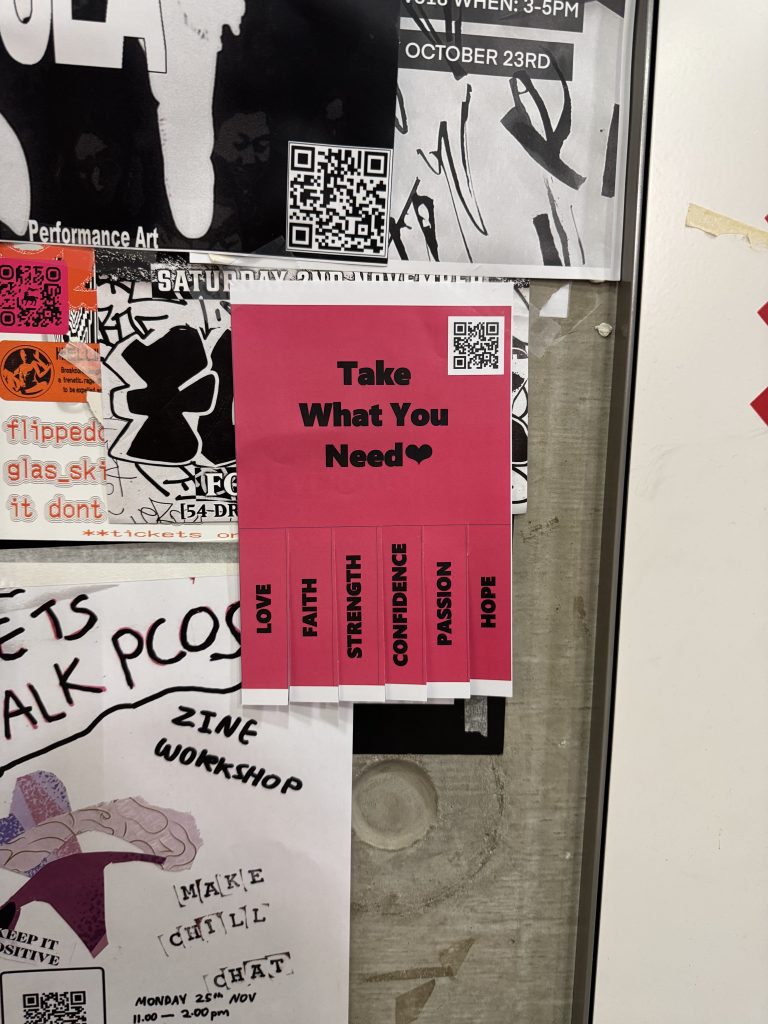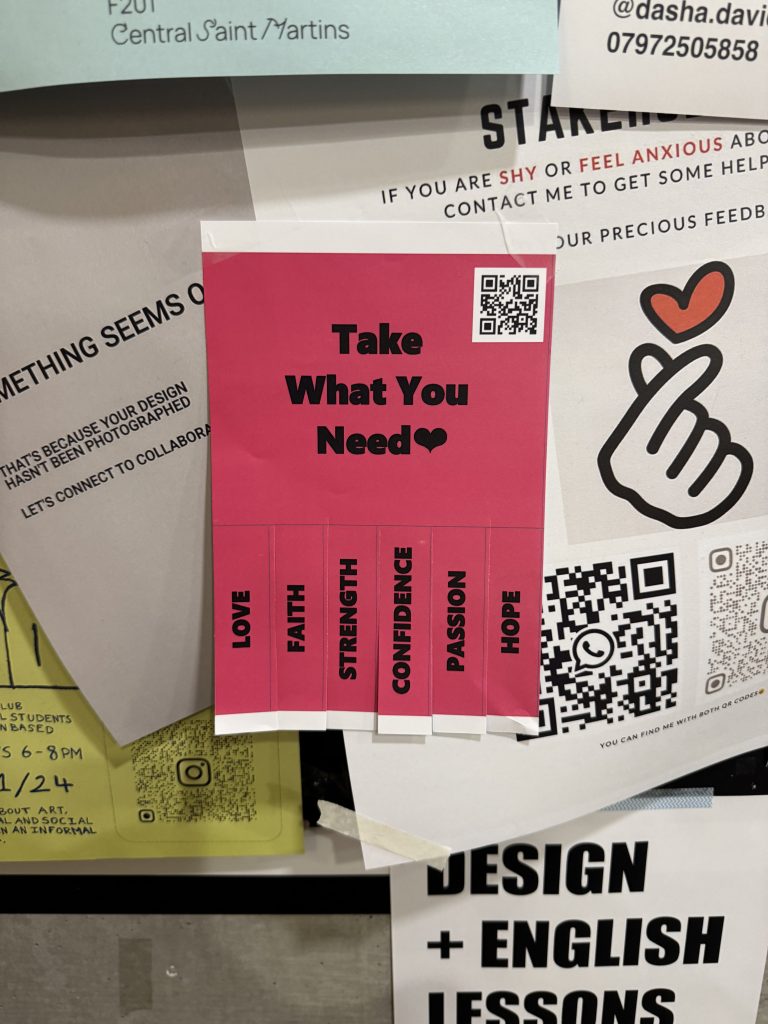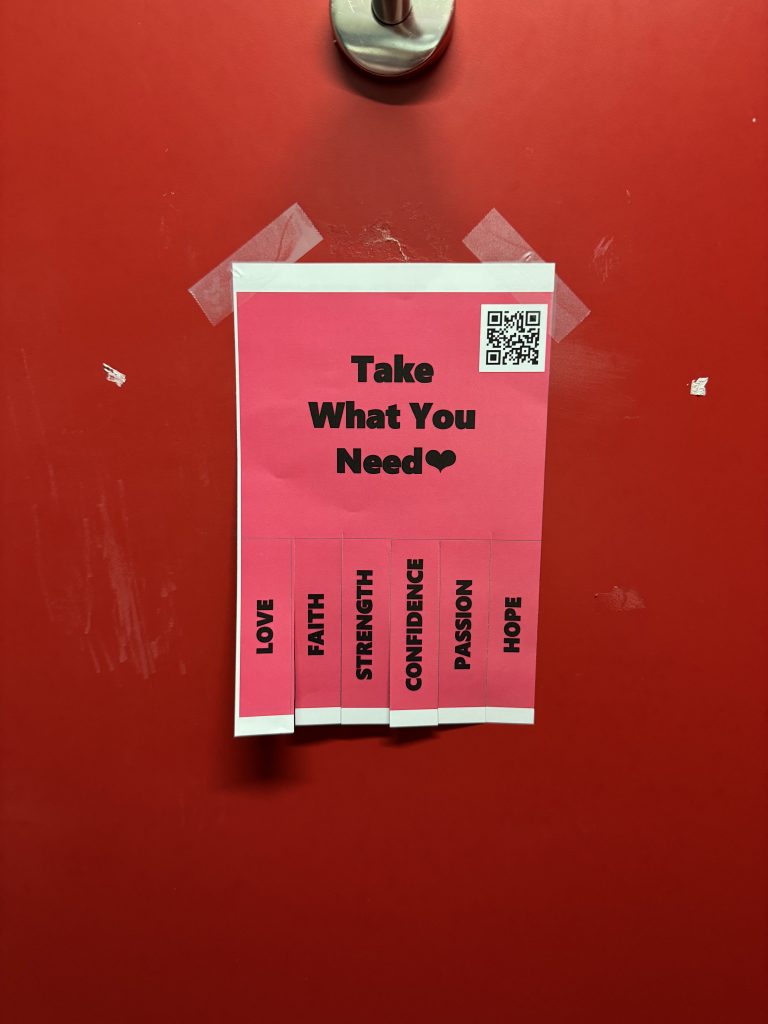I named my project ‘Beating FOMO Survival Guide’ based on the previous idea of the game.
Intervention 4
I prepared 6 different objects to be placed in different areas of the CSM to subtly guide the participants to explore and develop self-awareness:
Comic poster: advertising ways to relieve anxiety and gain energy
Based on Harvard Health’s four feel-good hormones: dopamine, serotonin, endorphins, and oxytocin, I created a poster of 24 ways to restore energy. It’s also a condensation of my previous vision for the game, giving more hints and options of what to do.
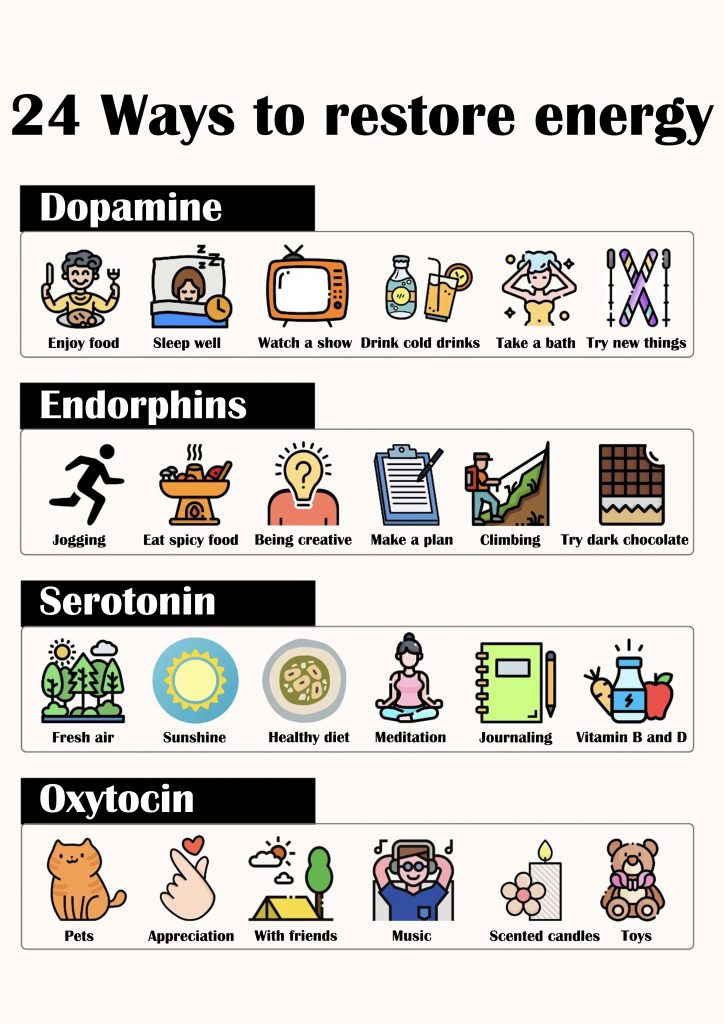
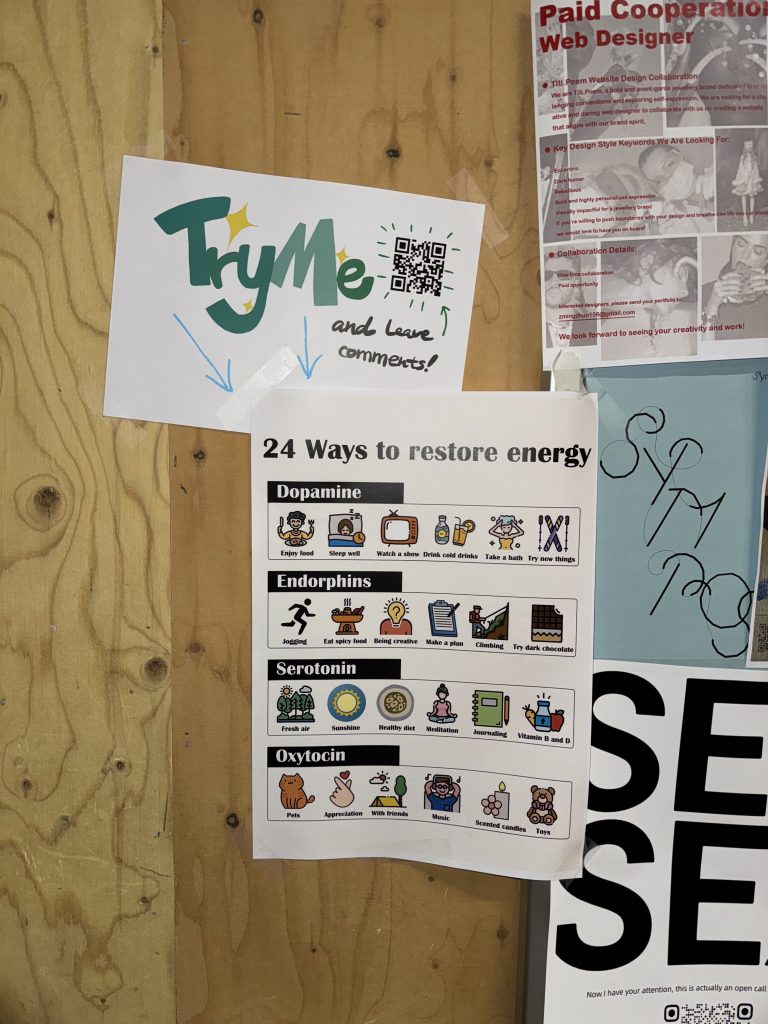
Jigsaw puzzles: improving concentration and patience
Jigsaw puzzles are a new hobby for me lately. Through jigsaw puzzles I can relax, take a break from screens, sharpen my memory, boost my problem-solving skills, and also share with friends.
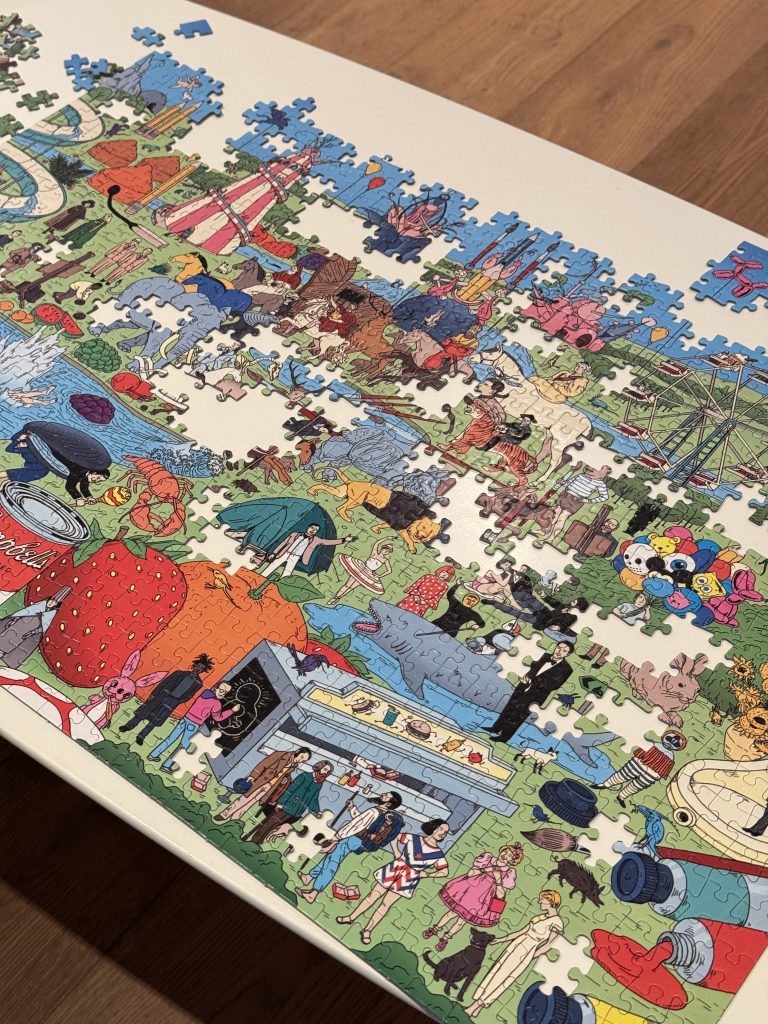
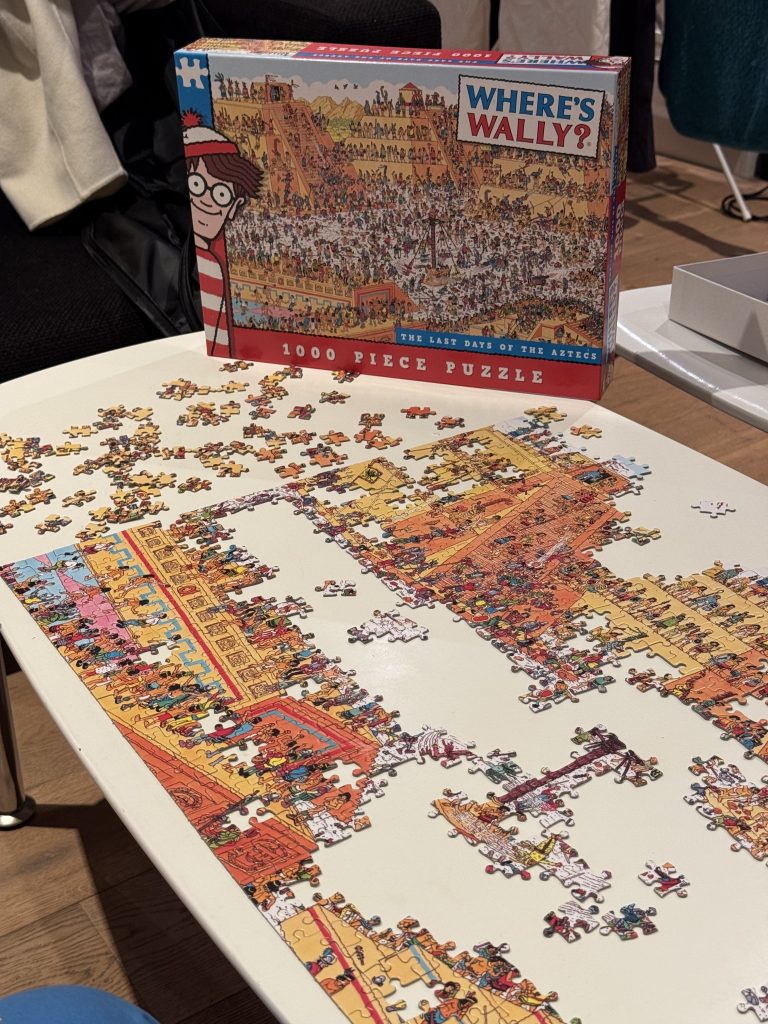
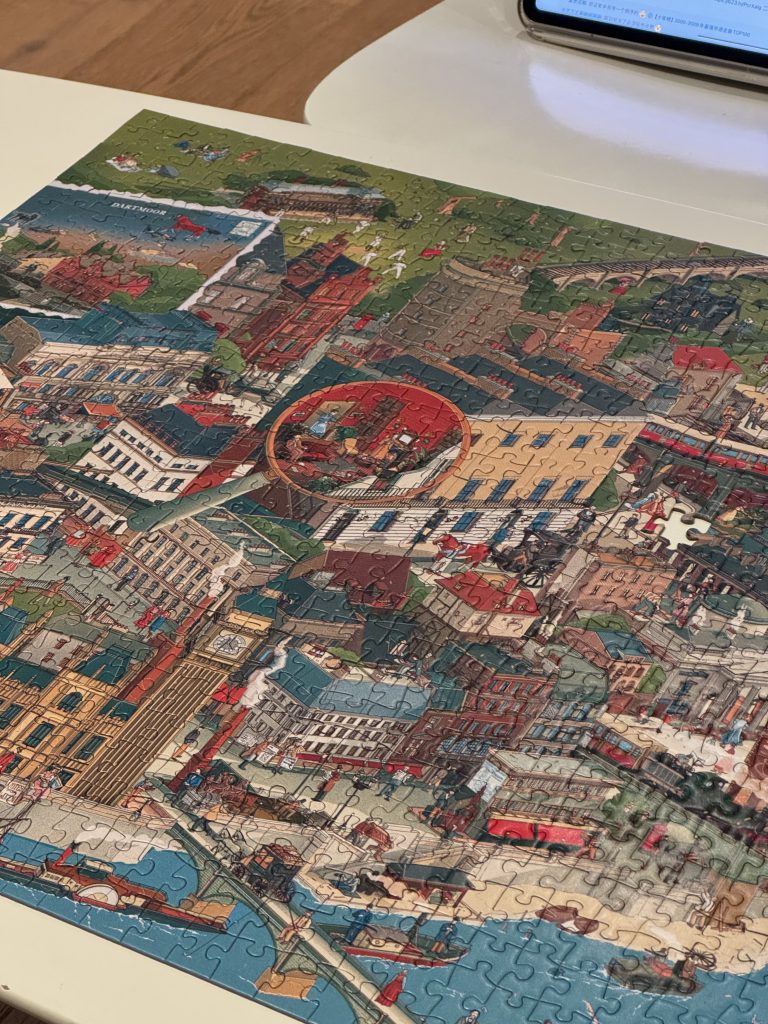
I keep it in the school library so that during finals week when students are feeling tired and stressed they can relax by playing with the puzzles, it helps them to enjoy the full time instead of receiving fragmented information on social media. In terms of the choice of puzzles rather than traditional puzzle shapes, I chose a fish-shaped pattern to increase the interest of the participants.
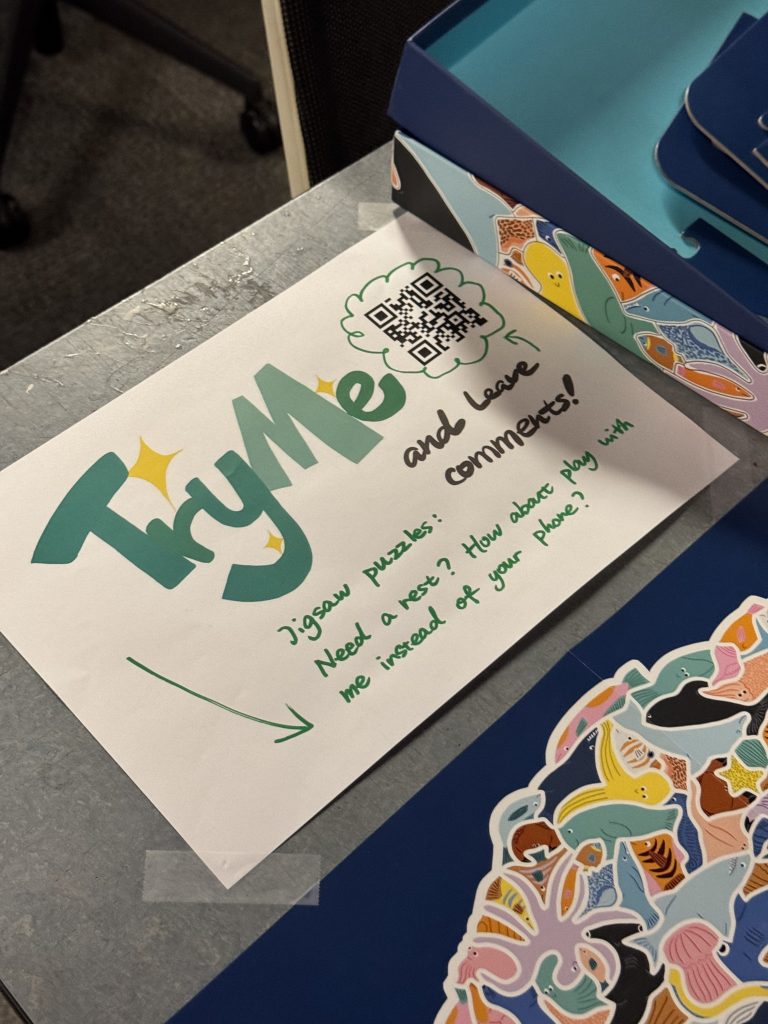
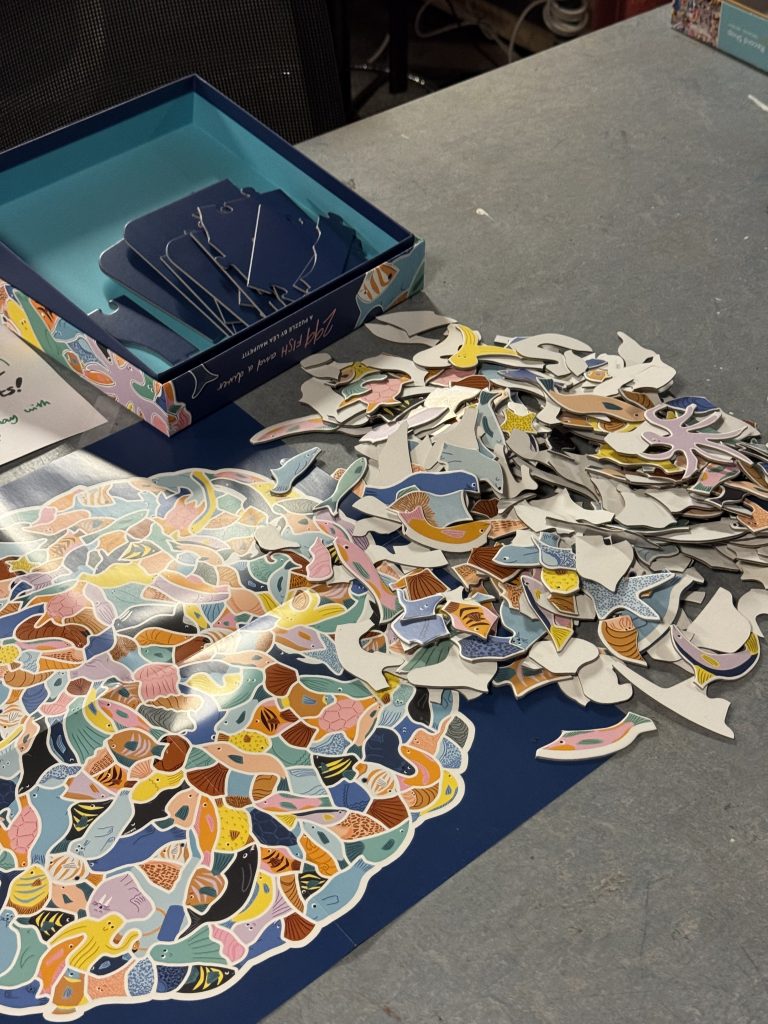
Wool: visualising emotions
Inspired by an interactive public installation WHAT MADE ME designed by Dorota Grabkowska and Kuba Kolec, participants shared their feelings and thoughts through a line connecting the answers to the questions on the wall, forming a path back to themselves.
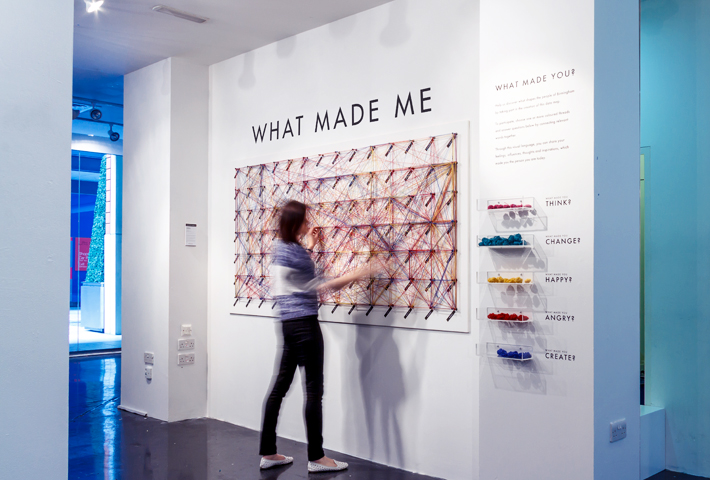
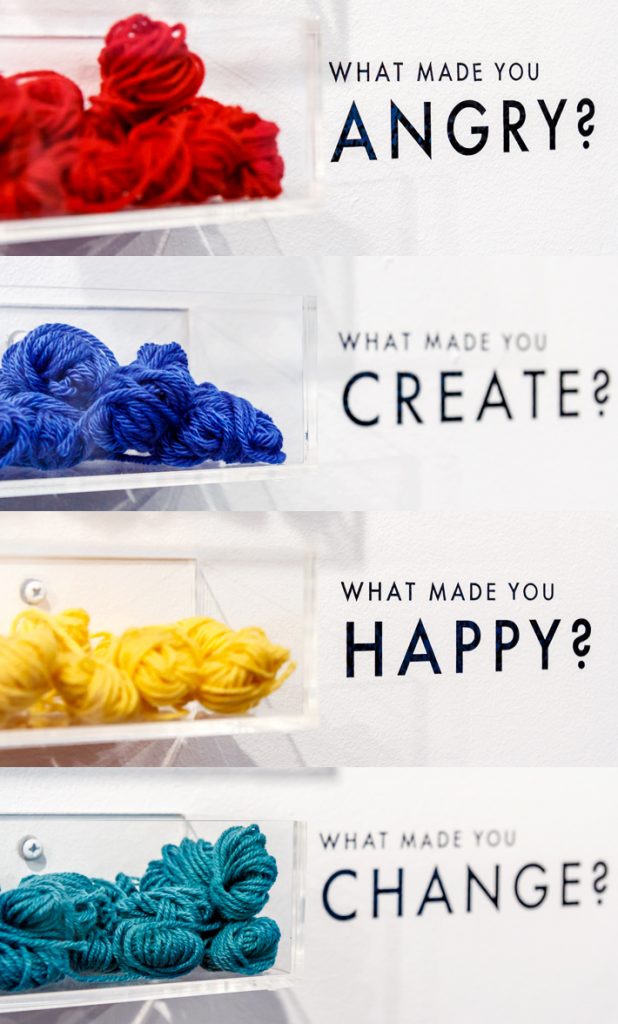
Based on this I changed the question to how you spend your day, which made participants realise that they spend too much time on social media and reminded them that there are many other interesting things in life besides mobile phones.
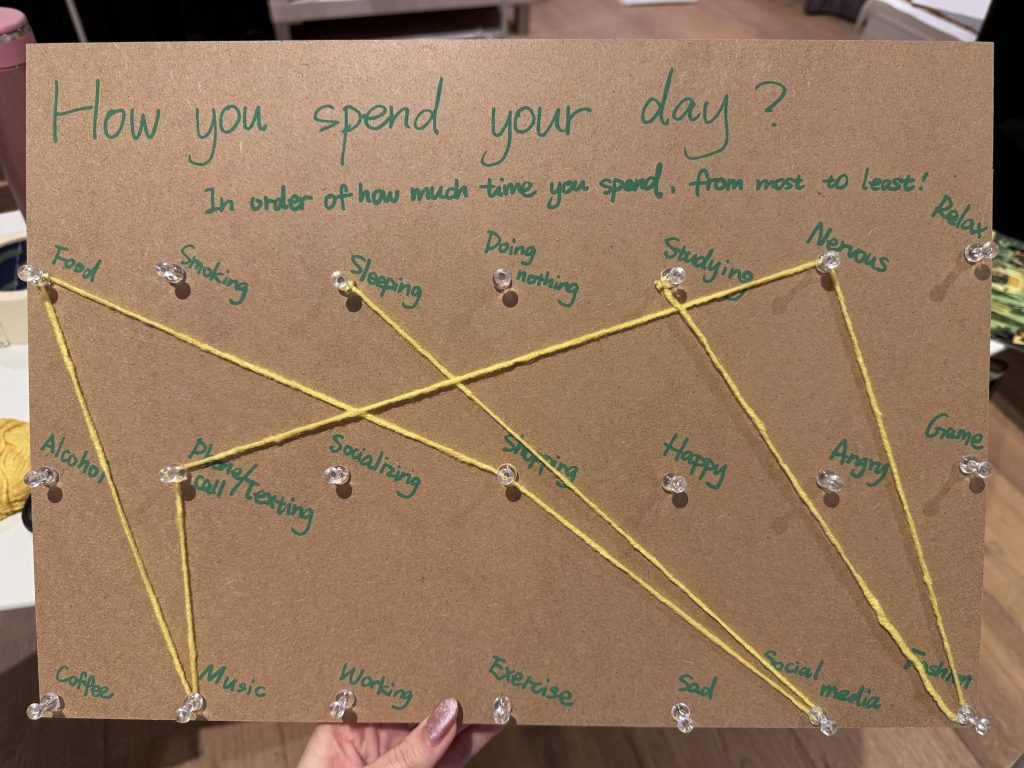
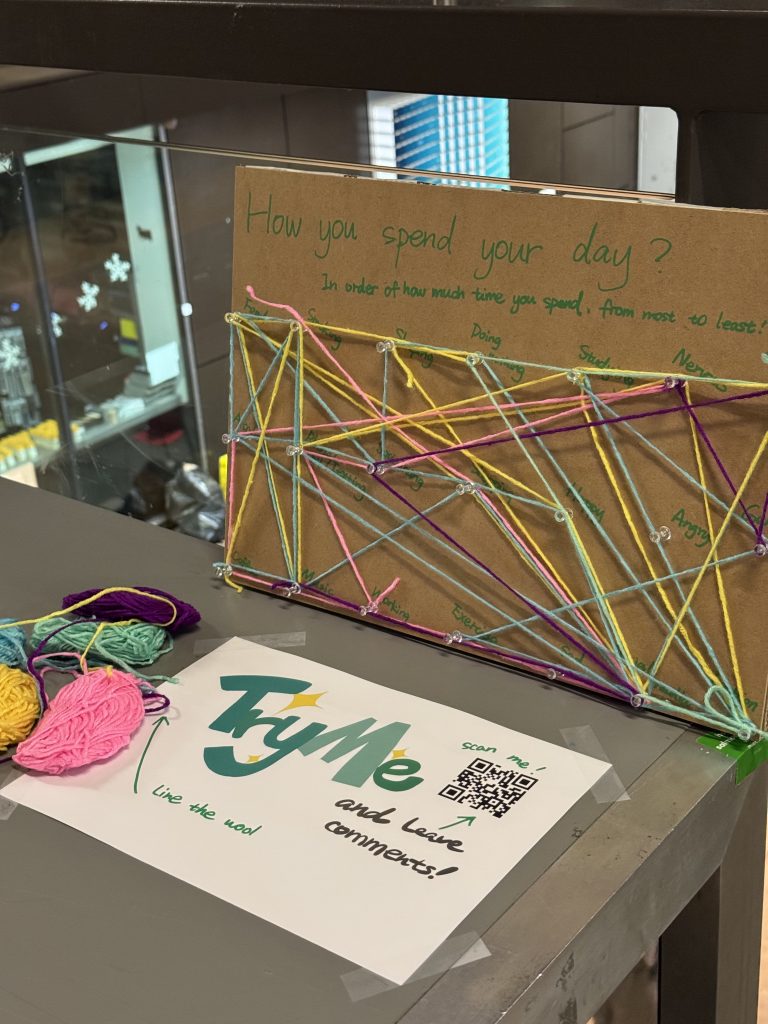
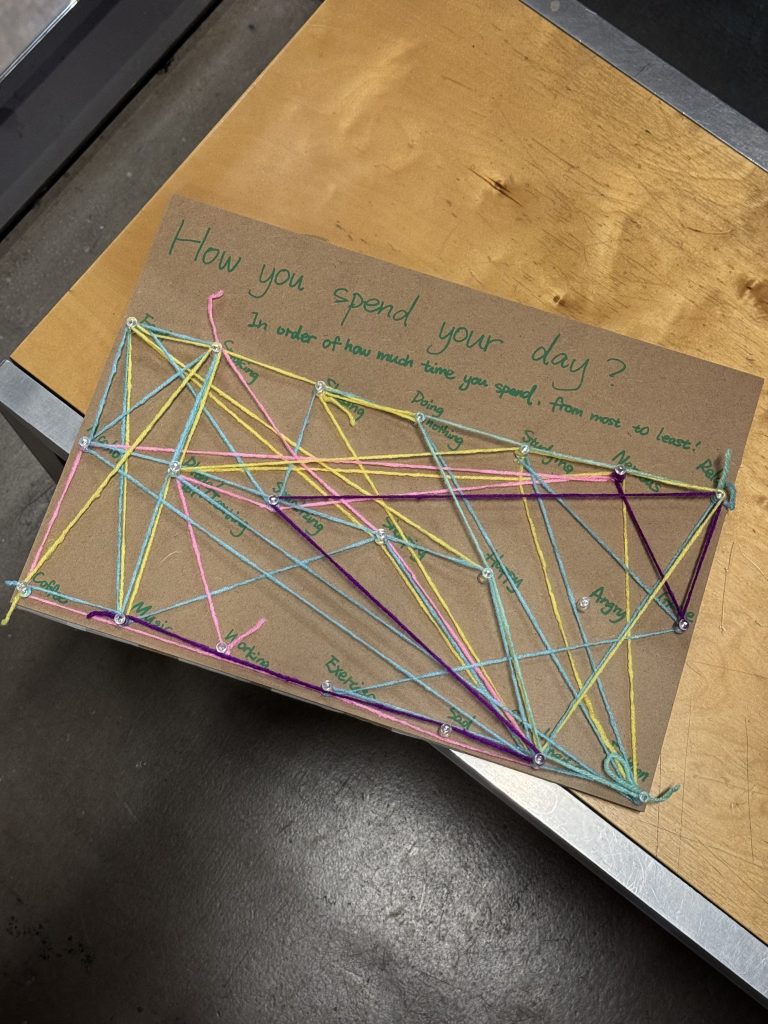
Wooden croaking frog: regular rhythms to help calm the mind
Wooden croaking frog is an instrument to help meditate and relax and has an important place in Taoism and Chinese folk music. I put it in the corner of the school to help the students release their inner stress and return to peace by listening to it.
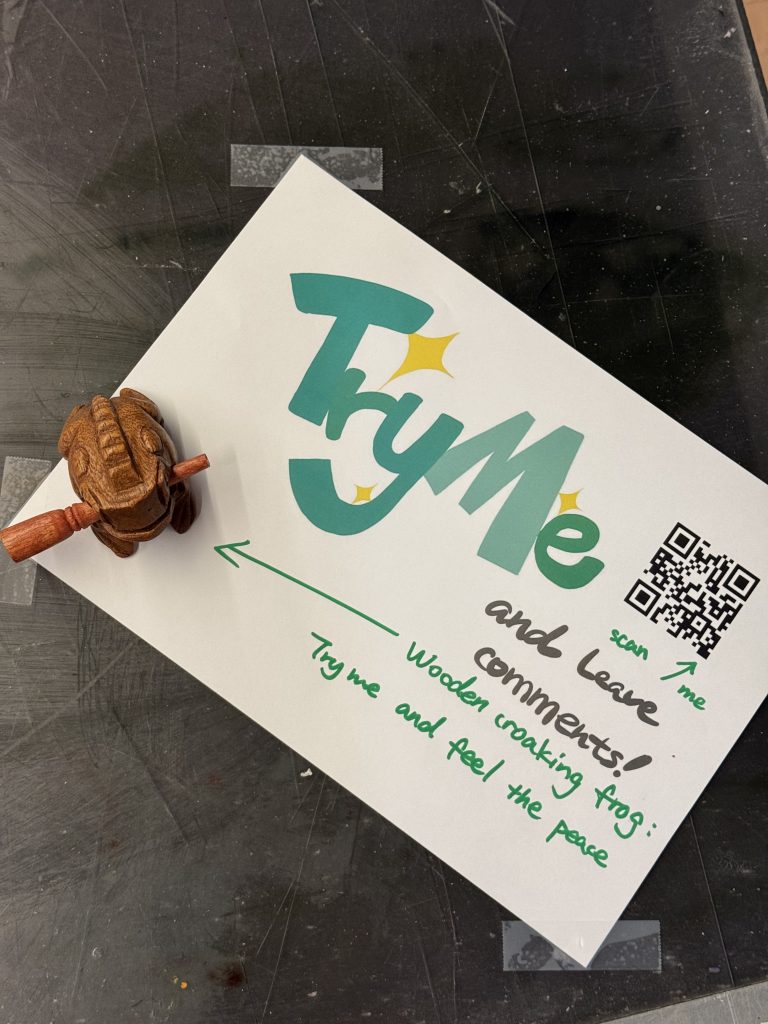
Mirror: self-awareness of emotions
Based on the ‘The Looking-Glass Self’ theory, which was proposed by American sociologist and social psychologist Charles Horton Cooley in his book ‘Human Nature and the Social Order’. The theory suggests that an individual’s sense of self develops gradually through constant social interaction. The reactions can be likened to a mirror through which the individual sees himself and based on which he develops a self-concept. I put a mirror in the learning corner to remind students to pay attention to how they are feeling.
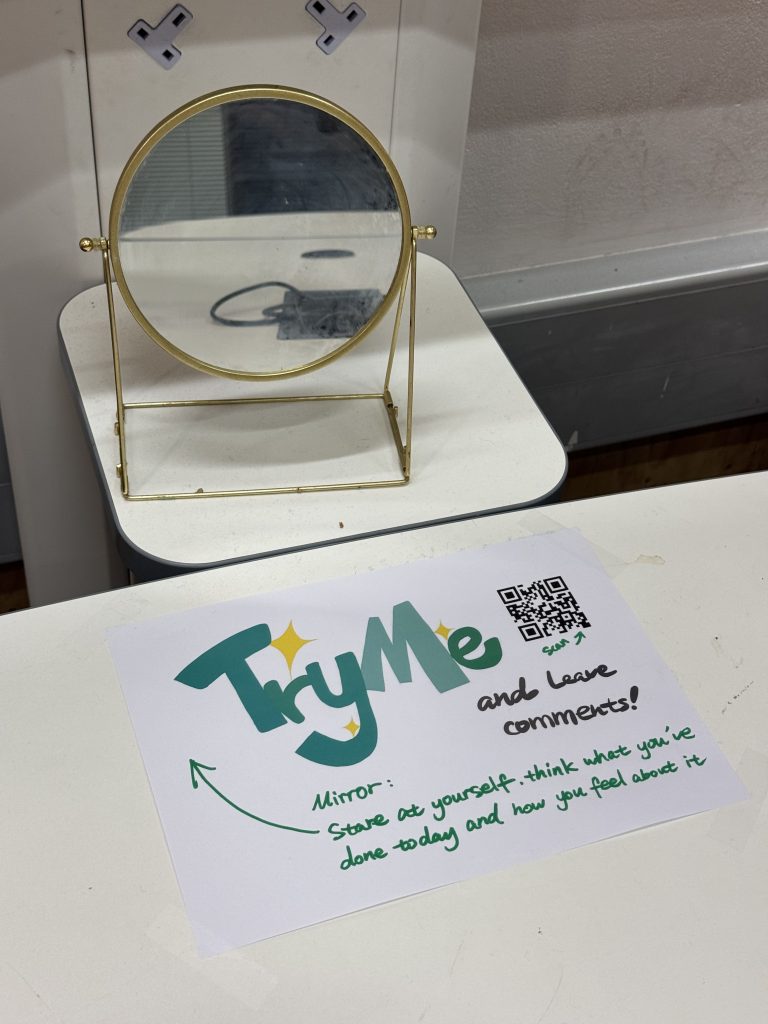
Pink Sign: giving positive feedback and encouragement
The design incorporates the Chinese lottery. Most temples nowadays have a box for people to draw a divination stick. Drawing sticks, like Bagua, is an ancient Chinese folklore way of predicting the good or bad luck of a matter.
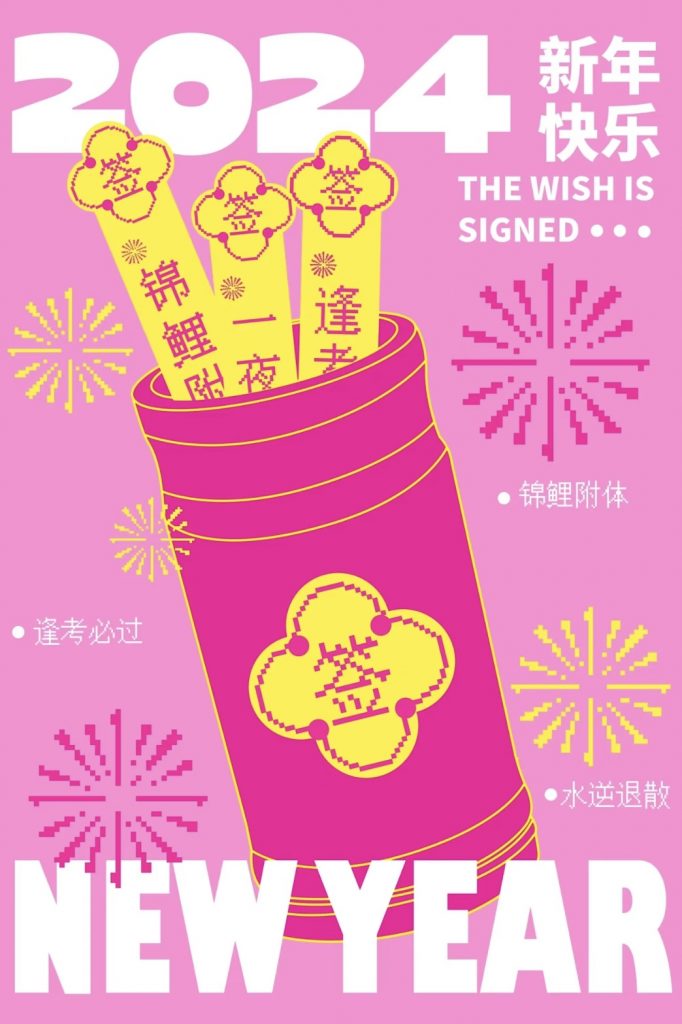
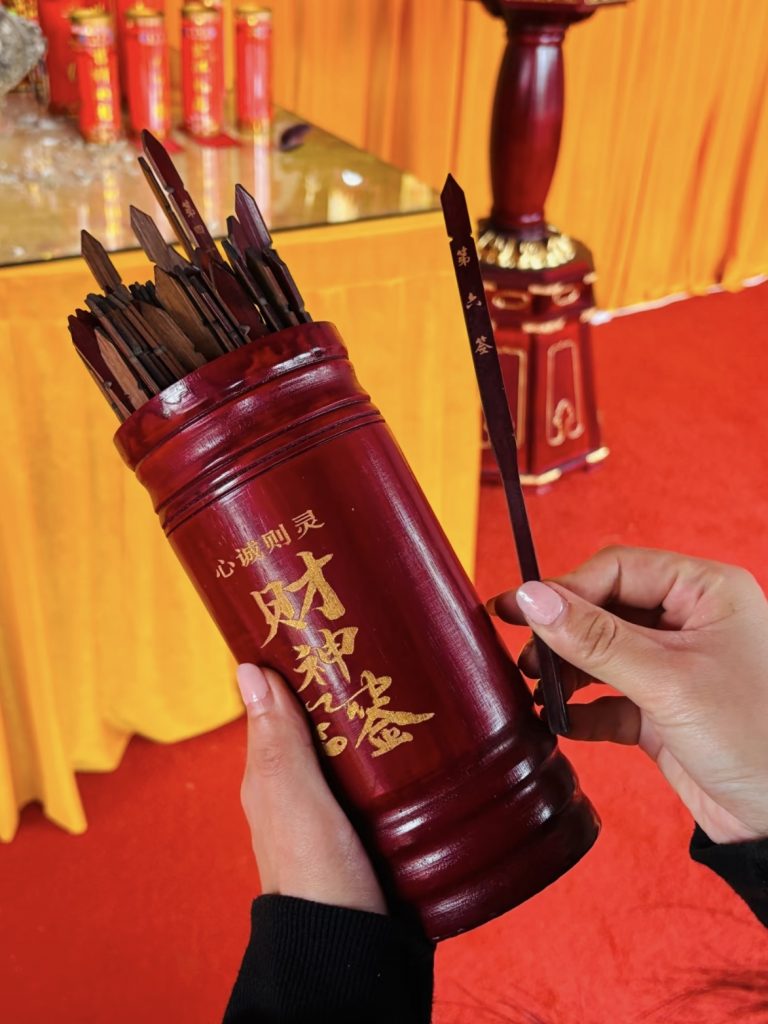
I replaced all the content with words of encouragement and let people choose for themselves what they need most.
